先解析厚腻苔产生的原理,然后是舌象图片的解析,最后放上我常用的一个方子“化浊汤”。
见到厚腻苔,我们常想到的就是脾虚痰湿盛,然后告诉患者,“给你化化痰湿吧!”,然后平胃散,二陈汤,四君子汤,三仁汤,达原饮,各种方剂就无脑用上了。
厚腻苔到底怎么产生的呢,我想只有知道它产生的整个过程,心里才算清楚,治疗才不会遗漏。阅读下面文章最好先读一下这篇:技法篇 | 舌诊之解构舌苔产生的原理
在上文中提到了舌苔的产生是土气之精华上荣于舌导致的,或者说五脏协同作用产生的水谷精微转运于舌而形成舌苔。我们都知道这个厚腻苔是痰湿内盛,而痰湿的生成涉及到了水谷精微产生,转运及代谢整个过程。
下面对这个过程进行一个描述:
饮食进入胃中,经过脾胃的研磨运转,心火肾阳的温煦,肝气的推动,就变成了水谷精微。
然后水谷精微经过脾气升清,可上输到肺,通过肺宣发肃降,朝百脉营养周身。
饮食进入人体,一部分变成水谷精微,另一部通过小肠的泌别清浊功能,就变成了糟粕即水谷浊气,谷浊主要通过肠道以大便方式排出,水浊通过膀胱以小便方式排出。当然还有一部分浊气会通过肺的宣发功能以汗液的形式排出。
肺与大肠相表里,肺与膀胱脏腑别通(脏腑别通论)。肺气的宣发肃降,直接影响到水谷糟粕的排泄。
而水浊要正常通过膀胱排泄,还要有肾阳的温通气化。
至于肝气它是一股木气,主疏泄流通,在整个产生、转运和代谢过程中全部参与,所以最常用的方法就是舒肝健脾。
从上面分析可得知,五脏六腑在水谷精微整个产生、转运及代谢过程中都有相应参与。
饮食进入人体内,如果没有有效转化为水谷精微,就会变成痰湿。转运过程中,不能正常输布,停留体内也变成痰湿,就像流动的水变成臭水沟一样。产生的糟粕不能及时排出体外,蓄积在体内也变成痰湿。
至于每个脏腑功能出现问题怎么产生的痰湿,结合上面的描述,自己分析一下,下面仅举个简单例子。
比如说肾,肾阳不足,那饮食没有火力加持就变不成水谷精微,不被人体吸收就变成了痰湿。而水浊的代谢需要肾阳的温化,膀胱才能正常司开合从小便排出,否则就会蓄积在体内变成痰湿水饮。所以痰湿的产生贯穿整个生成、转运、代谢的过程,而与五脏六腑都密切相关。不要见了痰湿就只知道健脾除湿。
一、厚腻苔的重新定义:不只是脾虚痰湿
1. 传统认知的局限性
- 教科书定义:厚腻苔=脾虚痰湿,但临床发现:
- 舌苔分布与胃经走向不符(如舌尖苔多反映心火)
- 全舌苔均匀者胃气未必强盛(如阳虚患者舌淡苔白)
- 现代验证:舌微生态研究发现,舌苔菌群与肠道菌群存在显著关联(《Nature》2023年研究)。
2. 五脏协同的痰湿生成机制
- 生成链条:
饮食→脾胃运化(水谷精微)→心火肾阳温煦→肝气疏泄→肺气宣降→三焦通调→水液代谢 - 关键靶点:脏腑功能失调表现舌象特征脾运化无力舌中苔厚腻肾阳虚水停舌根白腻苔肝气滞血瘀舌边鼓胀苔黄腻
二、18张舌象图谱解析与调理方案
1. 典型舌象分类
下面来具体看一下舌象,有些舌苔不完全厚腻,也放上去。仅简要分析舌象及简要的处方思路。

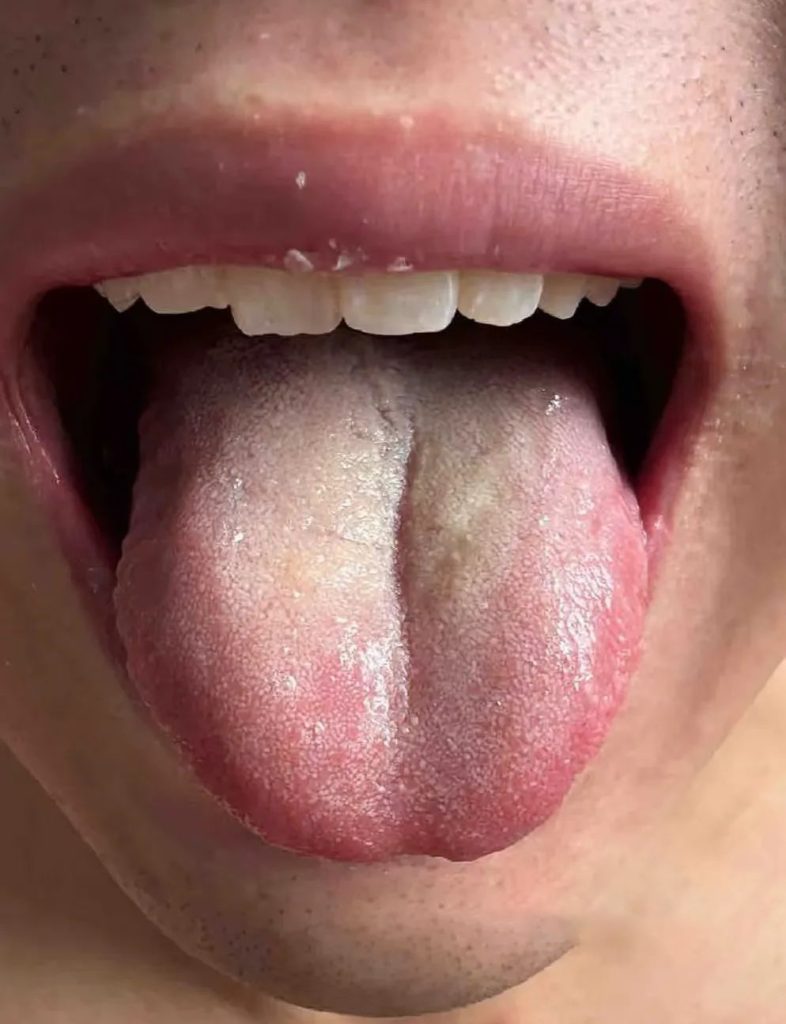
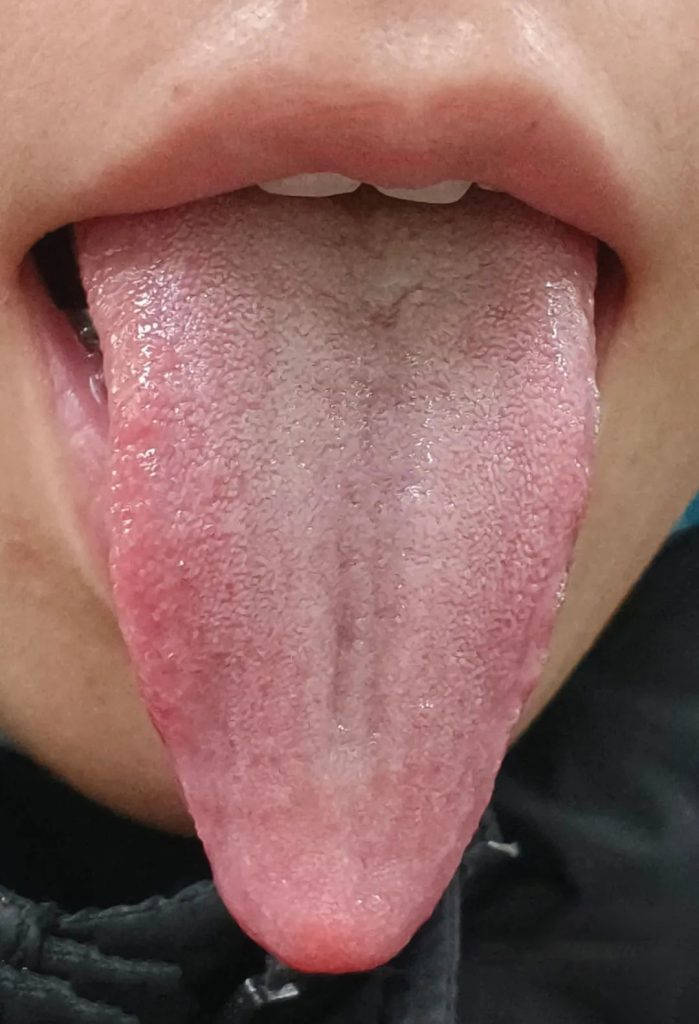


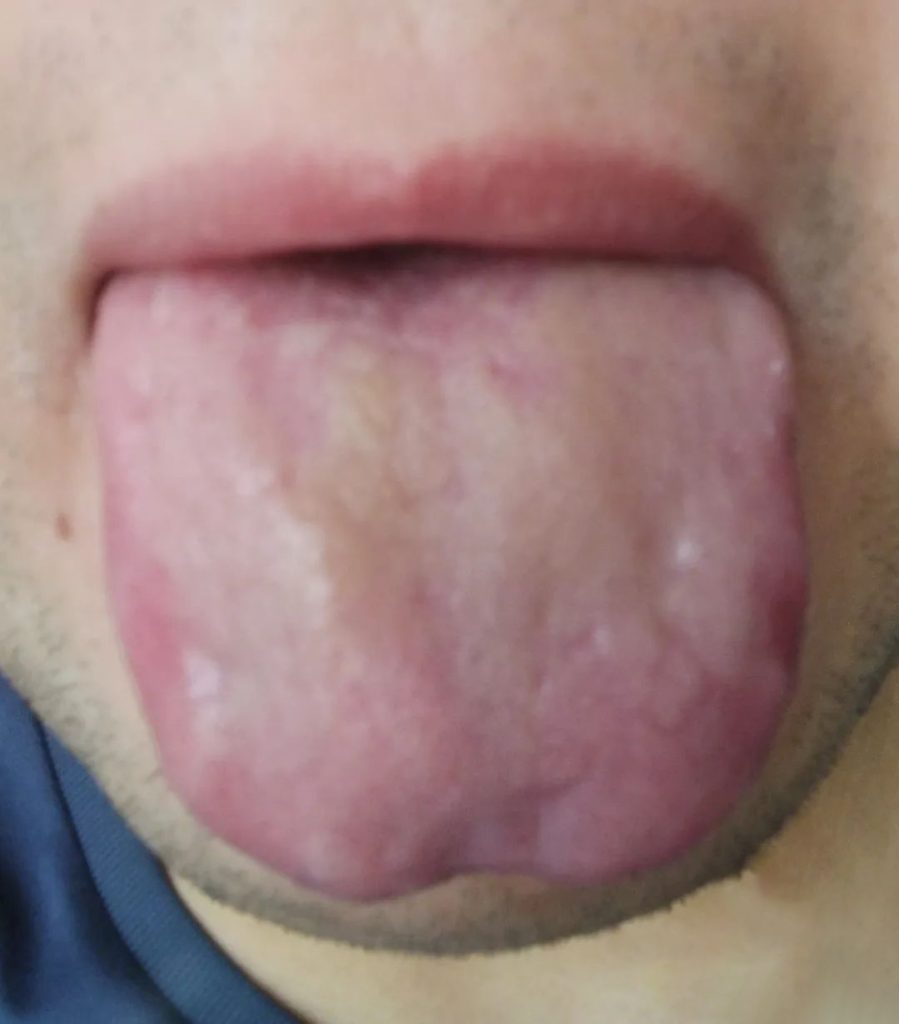



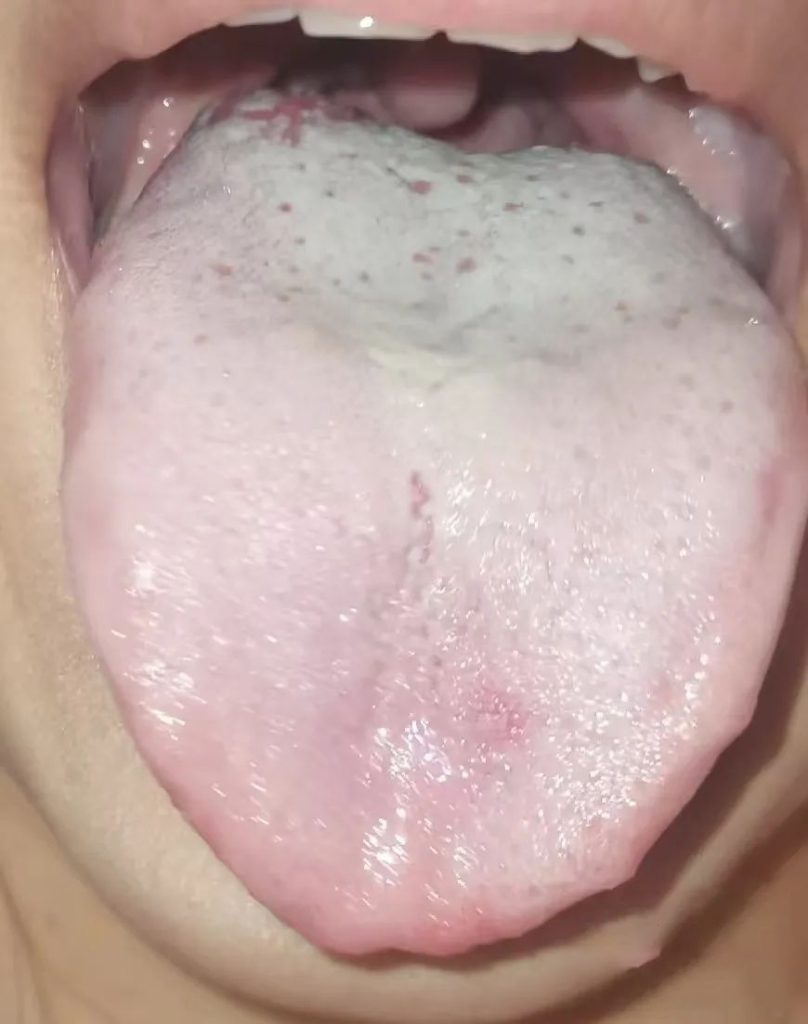
技法篇 | 舌诊之解构如意舌(下元亏损,上焦大气下陷)
此为肾阳不足,上焦大气下陷,舌质比较僵板也存在郁滞,需要温化寒湿,升举大气,行气活血。





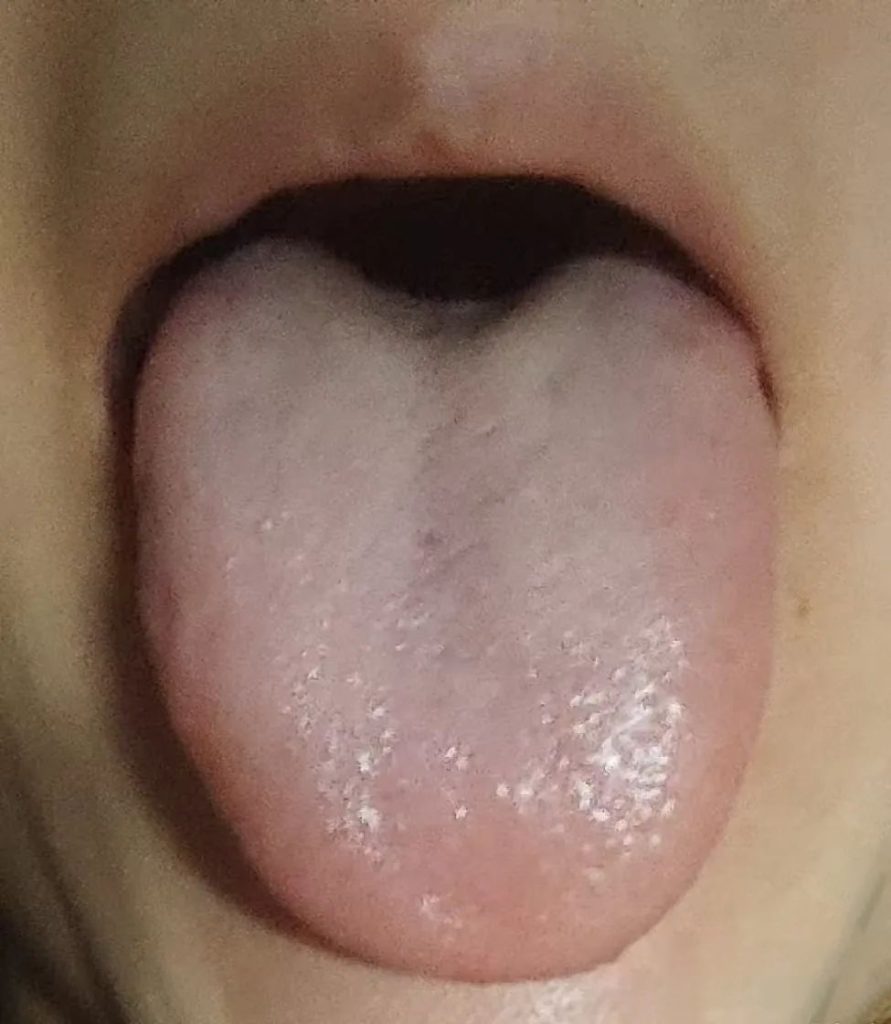

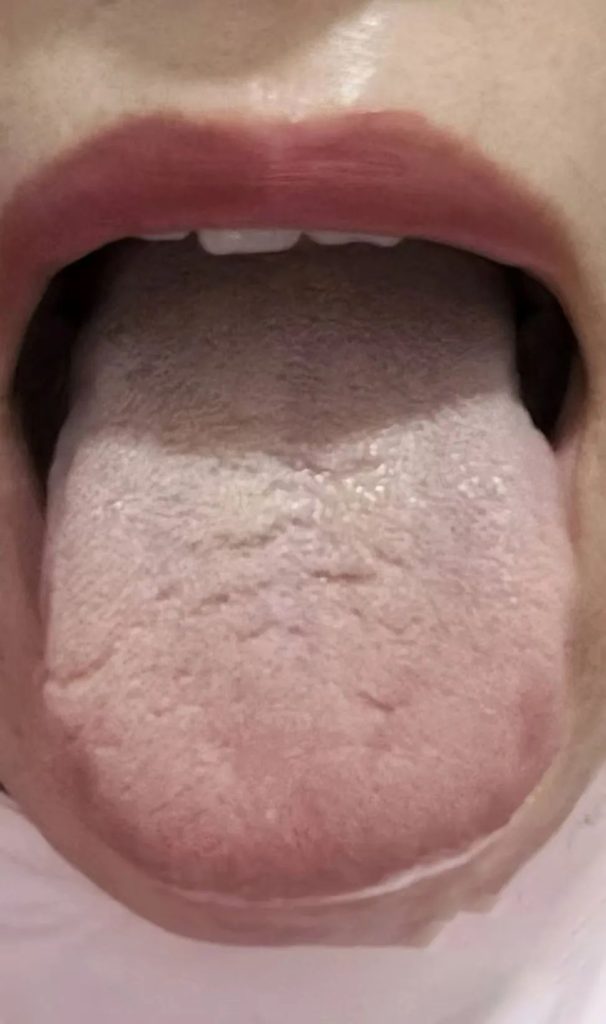
2. 用药逻辑
| 舌象特征 | 核心病机 | 推荐方剂 |
|---|---|---|
| 舌两侧鼓胀苔黄腻 | 肝郁化火 | 龙胆泻肝汤+郁金10g |
| 舌中裂纹苔厚腻 | 脾虚痰湿 | 参苓白术散+砂仁6g |
| 舌根白腻苔如积粉 | 肾阳虚寒湿 | 金匮肾气丸+草果10g |
| 舌尖红绛苔少 | 心火亢盛 | 导赤散+莲子心6g |
3. 化浊汤组方精要
- 化浊汤:柴胡,枳壳,厚朴,杏仁,鸡内金,火麻仁,桂枝,党参,茯苓,白术,草果,元参,元胡,半夏,陈皮
- 核心配伍:
柴胡+枳壳(疏肝解郁) 厚朴+杏仁(降肺通腑) 草果+元参(芳香化湿+养阴) 桂枝+党参(温阳益气) - 歌诀记忆法:
“柴枳厚杏鸡麻桂,参茯术草元夏陈” - 禁忌警示:
- 阴虚火旺者禁用温燥药(如草果)
- 湿热壅盛者需减党参用量
这个方子不是说见了痰湿就无脑用上,更多的是一种提示意义,里面涉及到的方子有四君子汤、平胃散、二陈汤、三仁汤、达原饮等,里面的药物涉及很多治法。
柴胡、枳壳疏肝解左路郁滞,厚朴、杏仁降右路肺与大肠之气。鸡内金提示消食,火麻仁提示通腑,桂枝提示用姜附桂温阳解表。党参提示补气,茯苓提示利小便,白术健脾燥湿利水都有,草果提示用芳香化湿药,元参提示养阴清热,元胡提示活血,半夏提示燥湿,陈皮提示行气。
燥湿,芳香化湿,行气,健脾,舒肝,利湿,通腑,消食,补气,活血,养阴,温阳解表。这些基本就是痰湿的常用治法,你有可能忘记了某个治法,背一下歌诀,就不会遗漏治法。里面疏肝、健脾、温心肾阳气,宣降肺气都涉及到了,另外痰湿主要从大小便代谢掉,当然有些皮肤病也用汗法,三路分消,都囊括进去了。比如你背一下歌诀背到草果,那提示芳香化湿,根据患者情况选择不同化湿药。
有表证用藿香、紫苏叶,消化不好用砂仁,有咳嗽用紫苏叶,有热可用平性化湿药佩兰,有寒用白蔻仁,舌苔如积粉用草果,头蒙用石菖蒲。
三、现代人常见误区与破解之道
1. 三大认知误区
- 误区1:见苔厚腻就用平胃散
- 正解:舌根腻+腰酸→肾虚痰湿,需金匮肾气丸+苍术
- 误区2:舌苔黄腻只清热
- 正解:黄腻苔伴舌淡→脾虚湿热,需四君子汤+茵陈
- 误区3:胖大舌=脾虚湿盛
- 正解:舌淡胖+畏寒→脾肾阳虚,需真武汤+白术
2. 调理周期规划
- 急性期(1-2周):三仁汤通三焦(杏仁+白蔻仁+薏苡仁)
- 缓解期(3-4周):参苓白术散健脾
- 巩固期(5-6周):龟鹿二仙胶固本
文中涉及的治法及用药仅供中医同行参考,患者切勿私自服用,否则后果自负。
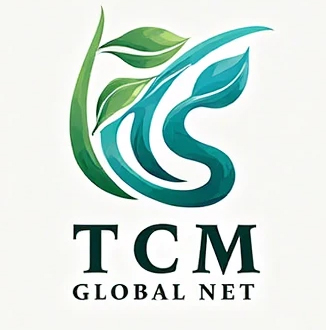
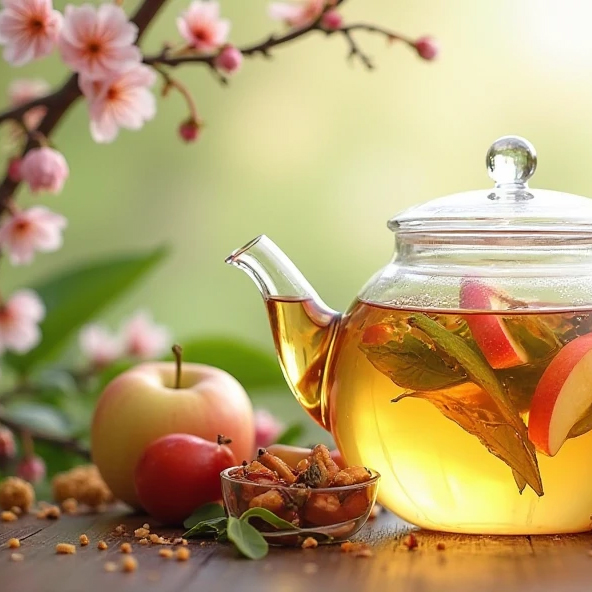
发表回复